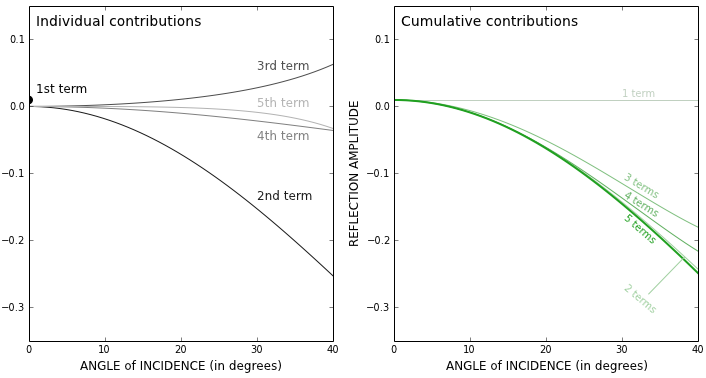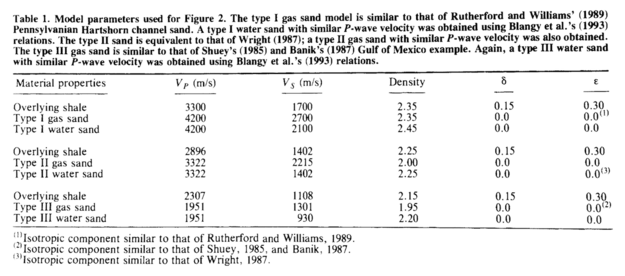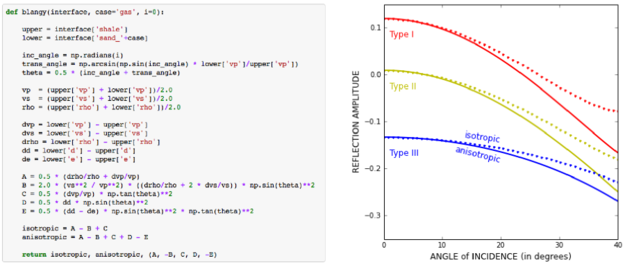The Blangy equation
/After reading Chris Liner's recent writings on attenuation and negative Q — both in The Leading Edge and on his blog — I've been reading up a bit on anisotropy. The idea was to stumble a little closer to writing the long-awaited Q is for Q post in our A to Z series. As usual, I got distracted...
In his 1994 paper AVO in tranversely isotropic media—An overview, Blangy (now the chief geophysicist at Hess) answered a simple question: How does anisotropy affect AVO? Stigler's law notwithstanding, I'm calling his solution the Blangy equation. The answer turns out to be: quite a bit, especially if impedance contrasts are low. In particular, Thomsen's parameter δ affects the AVO response at all offsets (except zero of course), while ε is relatively negligible up to about 30°.
The key figure is Figure 2. Part (a) shows isotropic vs anisotropic Type I, Type II, and Type III responses:
Unpeeling the equation
Converting the published equation to Python was straightforward (well, once Evan pointed out a typo — yay editors!). Here's a snippet, with the output (here's all of it):
For the plot below, I computed the terms of the equation separately for the Type II case. This way we can see the relative contributions of the terms. Note that the 3-term solution is equivalent to the Aki–Richards equation.

Interestingly, the 5-term result is almost the same as the 2-term approximation.
Reproducible results
One of the other nice features of this paper — and the thing that makes it reproducible — is the unambiguous display of the data used in the models. Often, this sort of thing is buried in the text, or not available at all. A table makes it clear:
 Last thought: is it just me, or is it mind-blowing that this paper is now over 20 years old?
Last thought: is it just me, or is it mind-blowing that this paper is now over 20 years old?
Reference
Blangy, JP (1994). AVO in tranversely isotropic media—An overview. Geophysics 59 (5), 775–781.
Don't miss the IPython Notebook that goes with this post.










 Except where noted, this content is licensed
Except where noted, this content is licensed